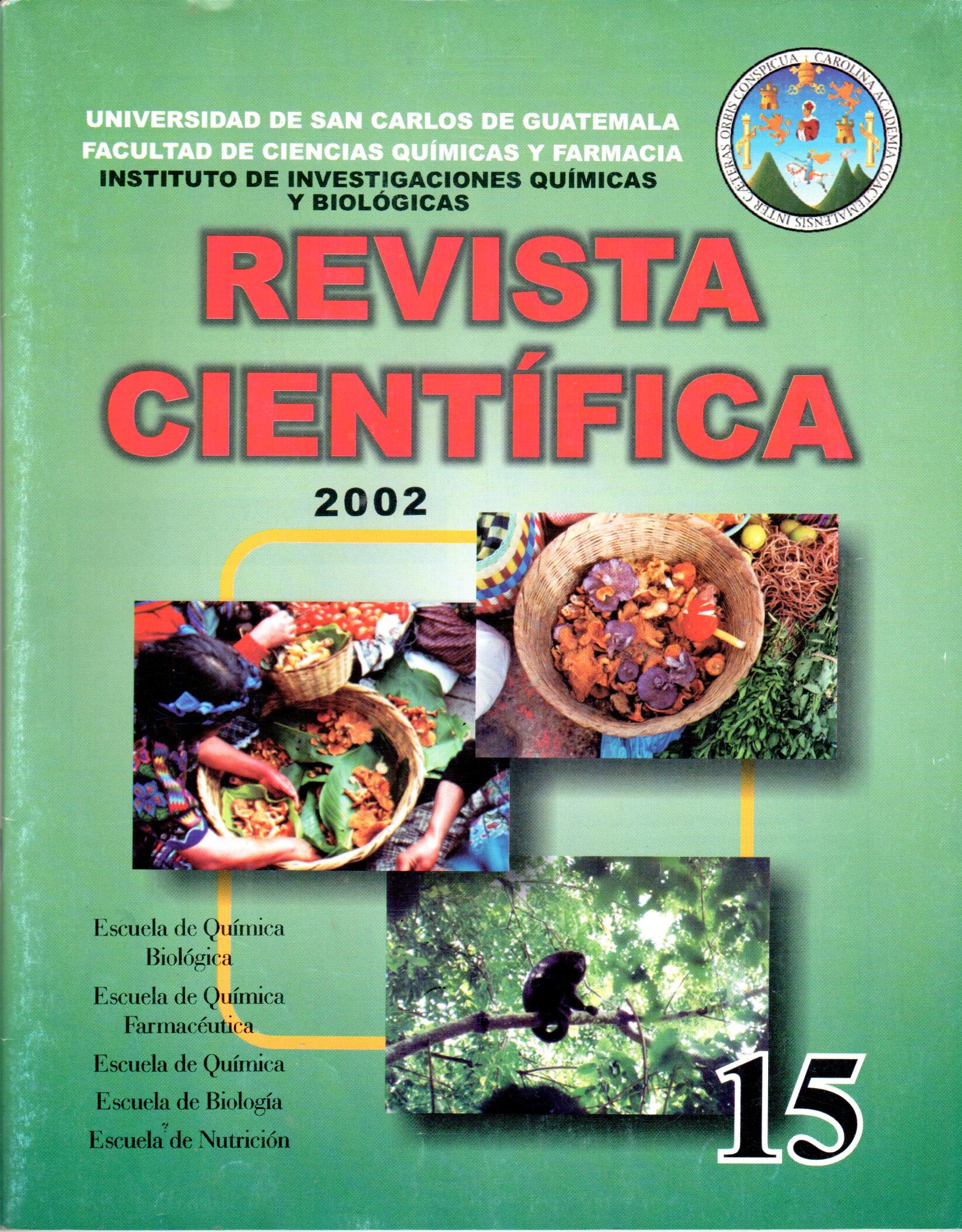Determination of Antioxidant Activity in Native Fruits Available in the Main Markets of the Capital City of Guatemala
DOI:
https://doi.org/10.54495/Rev.Cientifica.v15i1.257Keywords:
Determination, Antioxidant Activity, Native Fruits, Main Markets, Capital City of GuatemalaAbstract
Currently some degenerative diseases such as cancer and atherosclerosis have been associated with the oxidative effect caused by prolonged exposure to highly energetic substances known as free radicals (1-3). These species are generated as a product of metabolism and have the characteristic of being quite reactive and unstable due to the fact that their structure contains one or more unpaired electrons (1,4). named systems Antioxidants have the ability to inhibit or delay the oxidative effect caused by free radicals, thereby preventing the development of degenerative diseases (5). The human body naturally has enzymes that exert antioxidant effects. However, other antioxidant substances can be obtained through the consumption of foods such as vegetables and fruits that have been reported as carriers of alpha-tocopherol, beta-carotene and vitamin C. among others, whose antioxidant action has been proven (6). There is a large number of investigations that have determined the chemical composition of certain food groups, including fruits: however, no similar study has been carried out in Guatemala, so the total composition of some fruits is unknown, including Antioxidant inability of the same. This study determined the total antioxidant activity in some native fruits available in the main markets of the capital city through the measurement of the total antioxidant capacity, total phenols and vitamin C. In this way, it was confirmed that the fruits studied they have antioxidants and that including them in the diet is important and healthy, which makes it possible to give guidelines to promote their greater consumption, with the knowledge of the benefits that this represents for health.Downloads
References
Elliot J. Application of Antioxidant Vitamins in Foods and Beverages. Food Technology, 1999;53:46-48.
Matsingou T., Kapsokefalou M., Salipoglou A. 7n Vitro Antioxidant Activity of Black Tea and Mediterranean Herb Infusions Toward Iron Under Simulated Gastrointestinal Conditions. J. Food Sci. 2000;65: 1060-1065, https://doi.org/10.1111/j.1365-2621.2000.tb09418.x DOI: https://doi.org/10.1111/j.1365-2621.2000.tb09418.x
Yamaguchi F., el aL Free Radical Scavenging Activity and Antiulcer Activity of Garcinol From Garcinia indica Fruit Rind. J. Agrie. Food Chem 2000;48:2320-2325, https://doi.org/10.1021/jf990908c DOI: https://doi.org/10.1021/jf990908c
Halliwell B. Antioxidantes. 636-642. (En: Elihard E., Ziegler E., Fuer L. Conocimientos Actuales sobre Nutrición. 7ed. México: Instituto Internacional de Ciencias de la Vida, 1996.XV+73 lp).
Yen G, Chen H. Peng H. Antioxidant and Pro-Oxidant Effects of Various Tea Extracts. J. Agrie. Food Chem. 1997:45:30-34, https://doi.org/10.1021/jf9603994 DOI: https://doi.org/10.1021/jf9603994
Martínez I, Periago M, Rose G. Significado Nutricionai de los Compuestos Fenólicos de la Dieta. Archivos Latinoamericanos de Nutrición. 2000;50:5-15.
Standley L, el al. Influence of Processing Stage on Antimutagenic and Antioxidant Potentials of Rooibos Tea. J. Agrie. Food Chem. 200 1;49: 114-117, https://doi.org/10.1021/jf000802d DOI: https://doi.org/10.1021/jf000802d
Caballeros, K. Optimización de dos Métodos para el Tamizaje de la Actividad Anti oxidante de Extractos Vegetales. Guatemala: Universidad de San Carlos, (Tesis de Graduación. Facultad de Ciencias Químicas y Farmacía) 2001. 54 p. (pp 1. 38,43)
Downloads
Published
How to Cite
Issue
Section
License
Copyright (c) 2002 A. Barahona, P. Bolaflos, P. Calderón, I. Ramírez, V. Matta, J. Salazar, R. Velásquez

This work is licensed under a Creative Commons Attribution 4.0 International License.
Authors who publish with this journal agree to the following terms:
- Authors retain copyright and grant the journal right of first publication with the work simultaneously licensed under a Creative Commons Attribution License 4.0 that allows others to share the work with an acknowledgement of the work's authorship and initial publication in this journal.
- Authors are able to enter into separate, additional contractual arrangements for the non-exclusive distribution of the journal's published version of the work (e.g., post it to an institutional repository or publish it in a book), with an acknowledgement of its initial publication in this journal.
- Authors are permitted and encouraged to post their work online (e.g., in institutional repositories or on their website) prior to and during the submission process, as it can lead to productive exchanges, as well as earlier and greater citation of published work.









